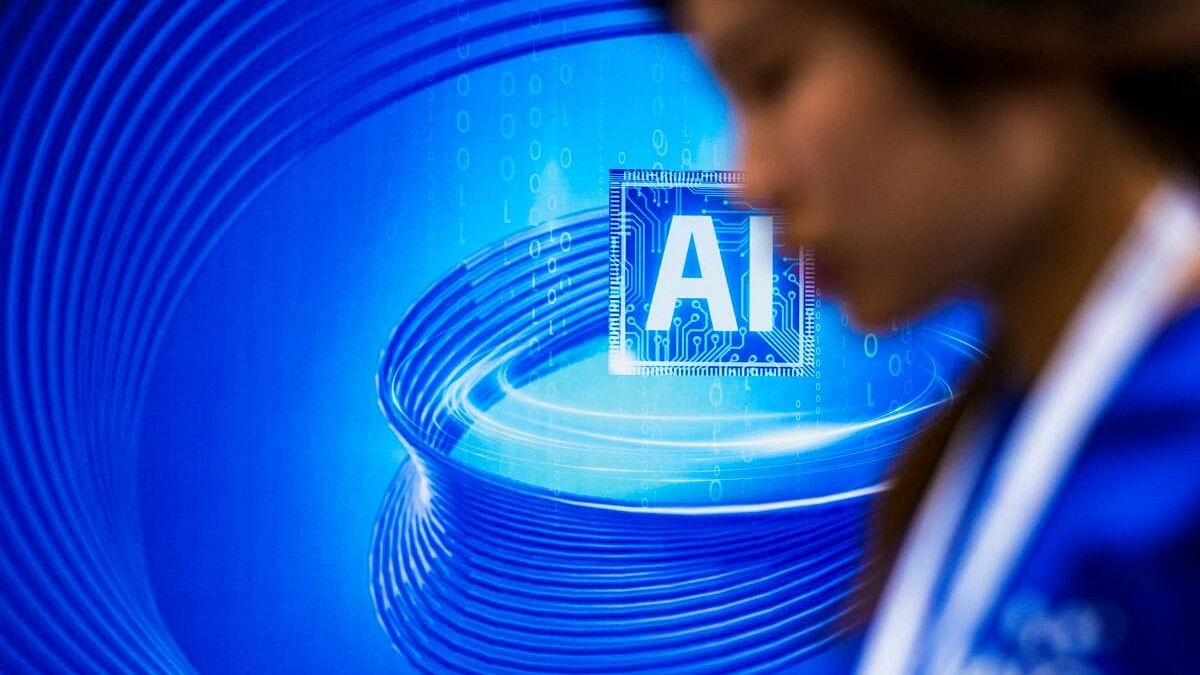
An AI (Artificial Intelligence) sign is seen at the World Artificial Intelligence Conference (WAIC) in Shanghai.
Credit: Reuters Photo
The government has set a target to create a $1 trillion digital economy by 2026 and Union Minister of State for Electronics and Information Technology, Rajeev Chandrasekhar, says that AI will work as a “kinetic enabler” in achieving this target.
An increasing focus on AI by corporates and policymakers is evident. After hosting the Global Partnership on Artificial Intelligence (GPAI) summit from December 12-14, Prime Minister Narendra Modi’s government is scheduled to unveil its AI policy under the India AI Programme on January 10.
According to Nasscom’s AI Adoption Index report, AI will potentially add $500 billion to India’s economy by FY2026. Around 60 per cent of this value addition to the economy is expected in four sectors – banking, financial services and insurance; consumer packaged goods and retail; healthcare; and industrial and automotive.
AI was discussed just as a theoretical possibility around a decade ago, but it has now become a reality today. It is being used for saving lives, transforming supply chains and disrupting shopfloor operations. At the same time, it has given rise to serious concerns related to the security and privacy of human beings.
“AI has several positive impacts, but it has many negative ones too. This is a matter of concern. AI can become the biggest tool in the development of the 21st century. But it can also play the biggest role in destroying the 21st century,” Modi said at the GPAI summit, calling for an “extremely cautious” approach.
The regulatory concerns on AI can be divided into two parts – ethical concerns in terms of human culpability for AI actions or omissions and corporate concentration of power through AI, said Avimukt Dar, the founding partner of IndusLaw.
“Regulators will need to ensure that AI remains ‘human-centred’ in terms of its application and does not in any way diminish or dilute the hard-fought liberties enshrined in our constitution,” Dar said.
Since AI is inherently ‘soulless’ it needs to be trained in a particular manner to imbibe a ‘civic sense’ just as humans are trained in school and home. Moreover, human intervention and oversight are critical where other humans are at risk.
The second big regulatory concern is related to the risk of concentration of power in the hands of a few corporations. This power stems from the AI’s machine learning capabilities, which are dependent on big data. This can lead to a new set of ‘haves and have-nots’.
“From an economic standpoint, policymakers will need to ensure that the risk of mass unemployment, particularly in semi-skilled labour is mitigated through appropriate incentives as well as upskilling programmes,” said Dar.
The Ministry of Electronics and Information Technology (MeitY) has constituted seven working groups to evaluate all aspects of the Al ecosystem. One of the Working Groups has been given a mandate to prepare a roadmap for the development of the skill and talent for AI to enable skilling, reskilling and upskilling and to create globally competitive talent in India.
As per the NASSCOM data, the overall AI employment in India is estimated at 416,000 professionals. The growth rate for the sector is estimated at 20-25 per cent.